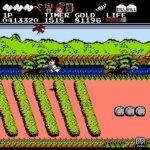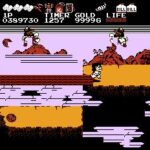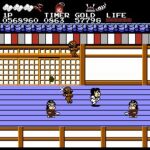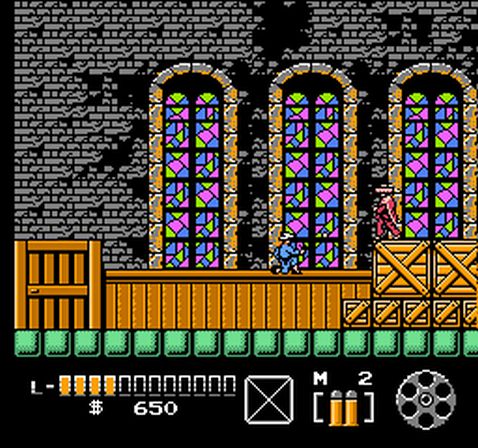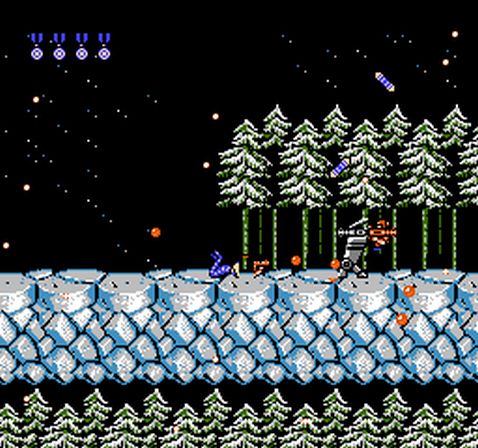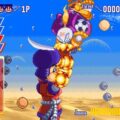Developer: Konami Publisher: Konami Release: 07/30/86 Genre: Action
Legend of the Mystical Ninja is one of the greatest hidden gems on the SNES. Konami took a gamble on an extremely Japanese title and the lucky few who gave it a chance found one of the most varied action titles on the system. But while it was the first title in the series in the West in Japan its roots go all the way back to the early 80s in the arcade. For its Famicom debut Konami crafted an original adventure called Ganbare Goemon! Karakuri Dōchū that has most of the elements that would come to define the series albeit in 8-bit form. Even though this is an old one I enjoyed it tremendously.
There is no overarching story to the game other than Goemon is a noble thief who steals from the rich and gives to the poor. The Goemon games have always straddled the line when it comes to genre and Ganbare Goemon is no different. You have the exploration and secret passages like Zelda, beat em up action and even light RPG elements. Ganbare Goemon was one of the largest Famicom games at release and it shows. Konami packed this one with content and for a 1986 title it holds up well.
Ganbare Goemon has thirteen stages and the goal of all but two is to find three passes and the exit to reach the next level. These passes are usually found in hidden passages in the environment that can literally be anywhere. If you tire of searching around each level has at least one first person maze you can explore for cash that will yield a pass. Certain shops will also sell them although the price increases with every stage. Even though there is a clock you have so much time it is not an ongoing concern meaning you can bash people for cash or comb the environment to your heart’s content. You have a lot of freedom to go about achieving the goal how you like.
Later games in the series have clear splits between town and action areas. Ganbare Goemon does not. Each level is gigantic and they eventually become sprawling enough to require a map. The various shops sell many items such as armor to reduce damage, sandals for increased speed, and numerous dishes to restore health. There are also a few mini-games to partake in such as gambling and the dungeon. These first person mazes feature no enemies and are a means to find free items. The challenge comes from navigating the labyrinths; like many similar titles this era all walls are identical and you have no map, only useless radar. But it is worth it to usually score a free pass.
With its mini inventory and top down view Ganbare Goemon will remind you of Zelda. Even the presence of hidden passages and dungeons bears this out. Even though you are not exploring a massive over world each level is large enough to get lost in, especially toward the end. While impressive it also brings another set of problems but more on that in a second. The action component almost feels like an afterthought. You only have one other weapon, tossing coins, and enemies barely acknowledge your presence. There are also no bosses although some might say that is a plus. Ganbare Goemon plays it straight and is devoid of the wacky elements that would later characterize the series. There is nothing wrong with that but it does mean the game is lacking in character, so to speak.
The game’s size works against it as it becomes very repetitive. Giant stages mean nothing if you do not have a variety of things to do in them. The environments begin to repeat or look very similar within a few stages which curbs the desire to explore. In some stages you can earn three passes in a few minutes but will still have to navigate eleven extensive sections to find the exit. By the game’s midpoint I began to bee line toward the exit as fast as possible to get it over with. The later games learn from this game’s mistakes. They not only vary their settings but offer more activities to participate in. If there were less stages with tighter design it would have been better.
In Closing
Ganbare Goemon! Karakuri Dōchū establishes a solid foundation that the series builds from and is good in short bursts. While repetitive I enjoyed my time with it. For such an old game I am surprised at how little Konami would change going forward. They simply added more of everything and made it better.


